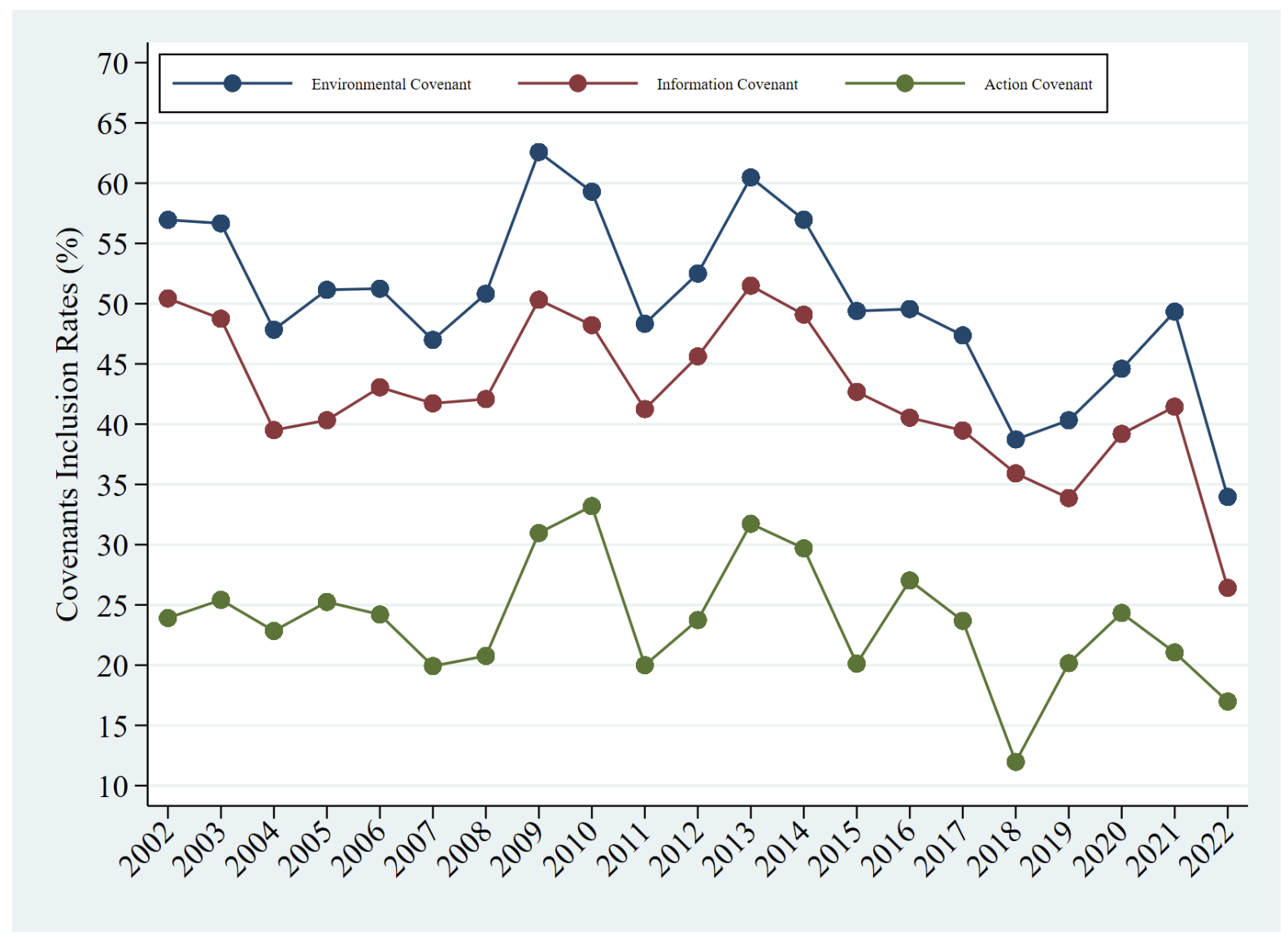Do banks care about their borrowers’ pollution?
Three potential reasons:
- Banks <3 planet.
- Banks greenwash.
- Banks are concerned about the impact of pollution on the
How do banks influence their borrowers’ pollution?
Environmental Covenants
- The terms of the debt contract can include pollution related terms.
- We gather and classify these contract terms from the public filings of U.S. firms.
- Categories: Action, Information, Compliance.
Covenant Types
- Action Covenants: Require the borrower to take specific actions to remediate pollution.
- Information Covenants: Require the borrower to disclose information about pollution.
- Compliance Covenants: Require the borrower to comply with environmental laws and regulations. (These are in all contracts.)
Action Covenant
“if the Administrative Agent or any Lender has formed a reasonable belief that material violations of Environmental Laws may exist or Hazardous Materials may be present on the Real Property in amounts or under circumstances which could reasonably be expected to result in a liability exceeding a Material Environmental Amount, then,”
”[perform] of any cleanup, remediation, containment, operation, maintenance, monitoring or restoration work, whether on or off of the Real Property”
“restore the Real Property to the maximum extent practicable, which shall include, without limitation, the repair of any surface damage.”
Information Covenant
“The Borrower will, and will cause each of its Subsidiaries to, permit any representatives designated by the Administrative Agent or any Lender, upon reasonable prior notice, to visit and inspect its properties, to examine and make extracts from its books and records, including environmental assessment reports and Phase I or Phase II studies,”
Compliance Covenant
“The Borrower will, and will cause each of its Subsidiaries to, comply with all laws, rules, regulations and orders of any Governmental Authority applicable to it or its property (including, without limitation, ERISA and Environmental Laws)”
Covenant Use Over Time
 {width=60%}
{width=60%}
Time Trend
- Explanations of covenant use cannot be explained by recent trends in opinion.
Main Question
- Does the type and location of the pollution matter?
- Should not matter if banks <3 the planet, or greenwash.
- If banks are concerned about the value of their collateral, then the use of covenants should depend on the type of pollution that the firm produces.
Pollution Data
- We supplement the loan data with EPA TRI data.
- Pollution is recorded by type and location:
- Land, Air, Water.
- On-site, Off-site.
Findings
- Only on-site land and water pollution matters.
- Banks appear to be concerned with the value of the assets that they can recover in bankruptcy.
Implications for policy
- Banks monitor pollution only to the extent that pollution degrades the expected value of their assets.
- Regulators remain essential for internalizing pollution-related externalities.